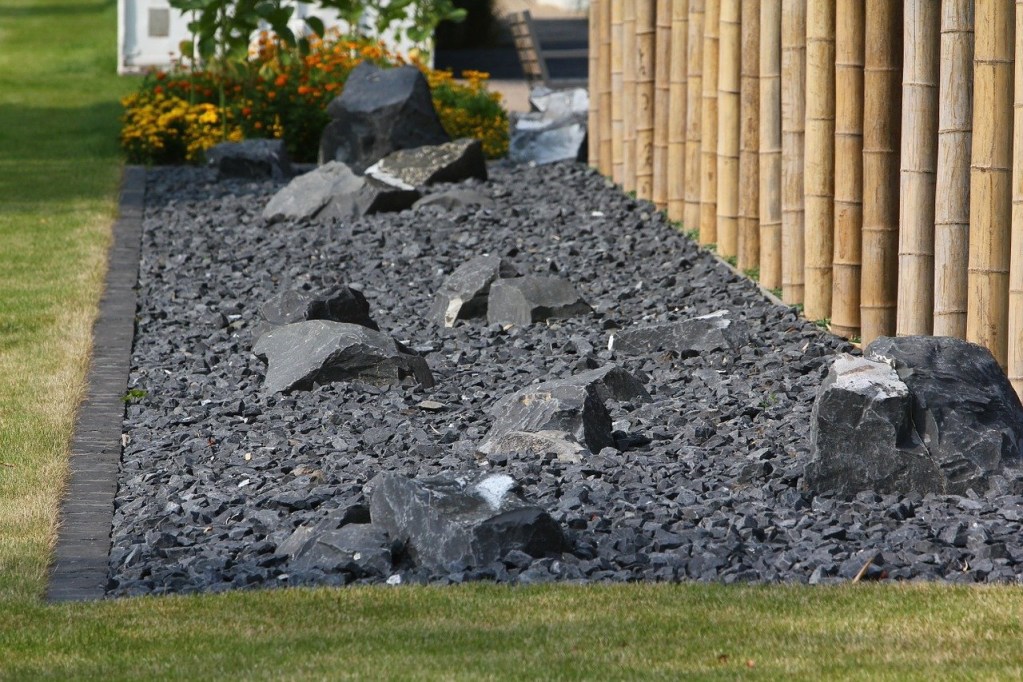Modern landscaping is all about geometric shapes, squares, rectangles, and triangles. It is very structured with concrete paths, patio areas, steps, and planters. There might be some metal and wood accents involved, but clean lines and clean shapes are the name of the game.
Modern landscaping looks great with contemporary or modern homes, but it is also an interesting choice with a traditional home. Here are some of the landscaping style’s key elements that you can incorporate into your yard.

Straight lines and angles
You still will have to do some lawn mowing and maintenance, but it will be in smaller areas—just a square or rectangular piece of lawn. You don’t have to worry about pulling those pesky weeds between the flagstones on the path because the path is made entirely out of concrete or large tiles. When it comes to the path, design it in such a way so that it does not curve. Instead, you want a straight or angled path, not curved. Potted plants are in neat rows and not in earthenware or pottery planters because that softens the lines. Modern landscaping has an element of industrial to it, so play that up with sharp lines.
Defined spaces
There is usually a concrete path to the door at the front of the house, and on each side of the door, you would see tall planters with green plants. There is limited use of color in modern landscaping, so no bright profusions of flowers—pick foliage over flowers.
But just because modern landscaping involves a lot of clean lines and sharp angles, doesn’t mean it’s boring. You can pick plants with texture, but be sure not to go overboard because then you move into the more traditional style.
If the plants you choose have flowers, be sure the flowers are light or pale in color. Some modern landscaping plants are yucca, elephant ear, hosts, New Zealand flax, and a succulent such as the Aeonium. Sedium has smaller, lighter colored flowers, and Apanthus has pale, lavender flowers on tall sculptured stems as far as flowering plants go.
If you are working with ample space in the front of the house and don’t want to put planters at the foundation (they hold moisture and can wick moisture into the foundation and siding), place your plants evenly spaced with room in between. Use small rock, gravel, or mulch around the plants, and make sure to use landscape edging so there are clean lines around the beds.
 Comfort and structure
Comfort and structure
In the backyard, consider having evenly-placed plants along the edge of the patio. Again, think about foliage over flowers, but spiky and textured plants are strong visual elements when used correctly—the larger your patio, the more plants you can decorate with. Be sure to place the largest plants in the corners for symmetry.
If your yard is big enough and you want to include concrete walkways, you can put parterres at the end of the paths to add interest. Parterres are level spaces with ornamental arrangements of plants with beds in geometric shapes.
You want the colors of your outdoor furniture to go along with the modern landscaping. Ipe, natural wicker, and bamboo are all great natural colors. Accents should be weathered steel and concrete. If you have lots of patio traffic and want to forgo putting out plants, surround the patio area with pea gravel to delineate that space.
For cushions on your patio furniture, look for neutral solid colors. As far as your fencing is concerned, be sure you don’t go too ornate. A simple metal fence will do the trick.
You can use some of the ornamental grasses as a modern landscaping element. They grow at a uniform length and are a neutral color. But beware, some of these grasses don’t pay attention to boundaries. Make sure you pick the kinds that don’t spread, or put them where you want them to spread, like along a fence.
 Add sustainable elements
Add sustainable elements
Modern landscaping incorporates elements of sustainability. Consider adding a composting area in the backyard and rain barrels to collect rainwater to use when watering your lawn and foliage. Plantings should be put in places where natural rainwater runoff will water them. If possible, add a wind or solar energy element.
Don’t think of modern landscaping as boring. It’s orderly and, for many, this fits both their lifestyle and the architectural style of their home. Modern landscaping is also beneficial if there are soil or climate issues that preclude planting large flower gardens since a lot of foliage thrives with a lot of rain, and concrete planters and pathways weather well. If you want to give modern landscaping a try, we’ve given you all the tools — go give it a try!
 Comfort and structure
Comfort and structure Add sustainable elements
Add sustainable elements


